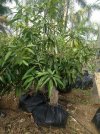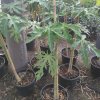o.singer1972
Member
I've been compiling a list of foods that are bad for red foots. Can anyone add to this list? Is there anything that should be taken off the list? I don't want to give my tort anything harmful. But I want excellent variety. Thanks for the help!
No no foods for red footed tort:
Bok choy
Beet greens
Rhubarb
Peas
Beans
Egg
Cereals
Grains
Dog/Cat food
Pellet food
High Purine foods
high-protein foods
Organ meats like kidney
Fish like mackerel
Herring
Sardines
Yeast
Limit:
Spinach
Kale
Mustard greens
Broccoli
Cabbage
Celery
Cucumber
Rhubarb
Citrus fruits
Tomatoes
Cruciferous plants
Let's discuss nutrition for South American tortoises,I've been compiling a list of foods that are bad for red foots. Can anyone add to this list? Is there anything that should be taken off the list? I don't want to give my tort anything harmful. But I want excellent variety. Thanks for the help!
No no foods for red footed tort:
Bok choy
Beet greens
Rhubarb
Peas
Beans
Egg
Cereals
Grains
Dog/Cat food
Pellet food
High Purine foods
high-protein foods
Organ meats like kidney
Fish like mackerel
Herring
Sardines
Yeast
Limit:
Spinach
Kale
Mustard greens
Broccoli
Cabbage
Celery
Cucumber
Rhubarb
Citrus fruits
Tomatoes
Cruciferous plants
The consensus of most breeders, merchants, vets, an enthusiastis falls within dark greens fruit to an extent of anywhere between 10 to 15% once in a while meaty items
The only issue is that most of the greens we provide some of the fruit we provide are completely different than the vegetation of the Amazon jungle (see attached table plant and fruit list).
Males and females eating variance was also noticed.
Tortoises are mainly opportunistic feeders and their diet is strongly influenced by seasonality on food availability (Moskovits and Bjorndal, 1990). In the Amazonian Maracá Island, near the border of Brazil and Guiana, C. carbonaria consumed more fruit in the wet season, which was significantly high-er than in the dry season when flowers were the most important food item.
of the 595 trees identified during the pheno-logical study, 74.8% presented zoochory syndrome, i.e. fruits that are dispersed and/or consumed by animals, totaling 51 species and 29 families. Based on fruit morphology and personal observations, we concluded that red-footed tortoises could potentially consume 33 fleshy-fruited species.
Did you hear? 33 varieties of fruit which are not available in North America. 33 variety as opose to three to five that we offer.
Also the consumption of fruit is larger than what is recommended by vets pet stores breeders and enthusiasts. Much more than 15 to 10% in volume.
Also broadleaf and flowers variety, see table, are much more available in wild specimen than in the captive tortoises we keep. That's means wild redfoot tortoises and yellow foot tortoises have a larger variety of plants in the Savannah then what we offer in North America.
So before we go going home on competing who's keeping a habitat perfectly like the Savannah of the Amazon in North America we need to put ourself in check and be humble to understand that without proper study investigation we really poorly feed our animals.
Growing our own tropicals indoor could be an awesome supplement to their diet and enrichment.
Keep being teachable is the key for any pet ownership





